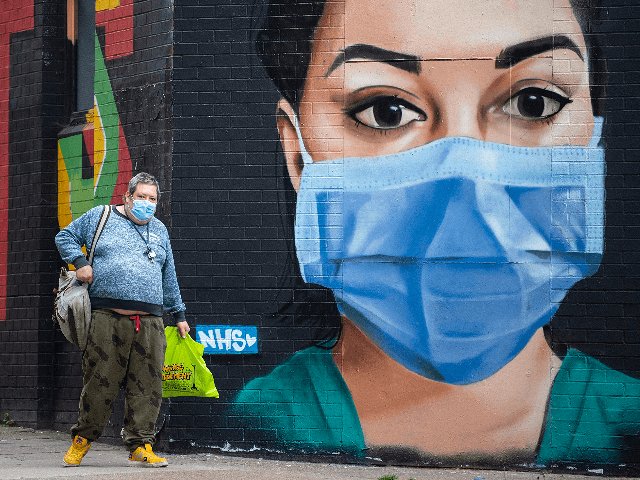The death rate in England has now fallen to its lowest since the Office for National Statistics (ONS) began recording figures in 2001.
851.2 people per 100,000 died in April 2021, compared to 1,859 per 100,000 in the same month last year, as the first wave of the coronavirus pandemic was reaching its peak in the United Kingdom.
Total deaths for the month were 6.1 per cent below the five-year average, according to the Telegraph, with just 2.1 per cent of death certificated making reference to COVID-19 — a month-on-month drop of some 77.6 per cent.
Indeed, the Chinese virus barely scraped into the top ten for attributed causes of death, coming in behind such perennial maladies as dementia, heart disease, and influenza at number nine.
Meanwhile, Tim Spector, Professor of Genetic Epidemiology at King’s College, has indicated that a team at the university tracking coronavirus cases does not believe that the Indian variant of the Wuhan virus which is not abroad in the United Kingdom appears to be making the situation significantly worse, at least for now.
“There’s no clear evidence yet that the new Indian variant is significantly worse than the old Kent one,” Spector said.
“While the outbreaks remain localised and UK numbers are steady and most cases appear mild, it’s highly unlikely to cause the NHS to be overrun or stop us coming out of lockdown.”
News of the figures comes as Chief Medical Officer Chris Witty said that “it is likely that by the end of last year at least as many and probably more people will have died of smoking-related disease than of Covid,” and that smoking “also has a very significant impact on hospitalisation as a result.”
Nevertheless, the media has been awash with stories of government sources warning that further planned lockdown easing on June 21st — “freedom day” — could be cancelled due to the spread of the Indian variant.

COMMENTS
Please let us know if you're having issues with commenting.